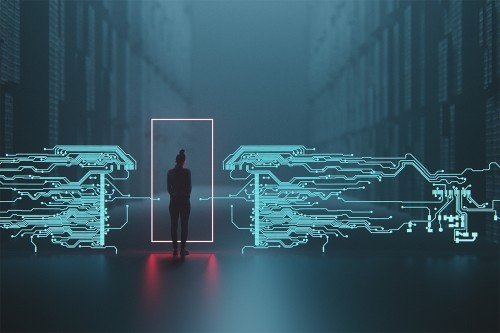
Introduction
In today's increasingly interconnected world, where information flows seamlessly across borders, the role of security agencies has become more critical than ever. With the constant evolution of technology, security agencies are continually adapting to new challenges and harnessing the latest advancements to protect nations, organizations, and individuals. In this blog post, we will explore some of the latest technologies and their impact on security agencies in safeguarding the digital landscape.
Artificial Intelligence and Machine Learning
Artificial Intelligence (AI) and Machine Learning (ML) have revolutionized the way security agencies combat emerging threats. AI-powered algorithms analyze vast amounts of data to detect patterns and anomalies that may indicate potential security breaches. ML algorithms can learn from past incidents, identify trends, and make predictions, thereby enhancing threat detection and prevention capabilities. AI and ML also enable security agencies to automate routine tasks, freeing up human resources for more complex decision-making processes.
Artificial Intelligence (AI) and Machine Learning (ML) are transformative technologies that have revolutionized various industries and significantly impacted our daily lives. AI refers to the development of intelligent machines that can mimic human cognitive functions, while ML is a subset of AI that focuses on algorithms and statistical models that enable machines to learn from and make predictions or decisions based on data.
AI and ML have made significant contributions to numerous fields, including healthcare, finance, transportation, and entertainment. In the realm of security, these technologies have become crucial in combating emerging threats and strengthening defenses. Here are some key areas where AI and ML are making a substantial impact:
-
Threat Detection and Prevention: AI and ML algorithms can analyze vast amounts of data and identify patterns or anomalies that may indicate potential security breaches. By processing real-time data from various sources, including network logs, user behavior, and system vulnerabilities, these technologies can detect and respond to security incidents in a proactive and efficient manner.
-
Advanced Analytics: AI and ML techniques enable security agencies to extract actionable insights from massive volumes of data. By analyzing historical and real-time data, security professionals can gain a deeper understanding of threat landscapes, identify emerging trends, and develop proactive strategies to mitigate risks effectively.
-
User and Entity Behavior Analytics (UEBA): ML algorithms can learn typical behavior patterns of users and entities within a network. By continuously monitoring and analyzing user activities, deviations from established patterns can be detected, enabling the identification of insider threats, compromised accounts, or unauthorized access attempts.
-
Malware Detection: AI and ML algorithms can analyze the characteristics of known malware samples to develop robust models that can detect new and previously unseen malware variants. This proactive approach helps security agencies stay ahead of evolving threats and enhances the accuracy of malware detection and prevention mechanisms.
-
Natural Language Processing (NLP): NLP techniques enable machines to understand and process human language. This capability is crucial in security for tasks such as analyzing text-based communication, monitoring social media platforms for potential threats or indicators of malicious activities, and identifying phishing attempts or social engineering attacks.
-
Cybersecurity Automation: AI and ML technologies facilitate the automation of routine cybersecurity tasks, such as vulnerability scanning, log analysis, and incident response. By automating these processes, security agencies can streamline their operations, improve response times, and free up human resources for more complex decision-making and strategic planning.
It is important to note that while AI and ML offer numerous benefits, they also raise ethical considerations and potential risks. Ensuring transparency, accountability, and data privacy are essential when deploying these technologies in security agencies.
In conclusion, AI and ML have emerged as powerful tools for security agencies, enabling more efficient threat detection, improved incident response, and enhanced overall cybersecurity posture. As these technologies continue to advance, security professionals will be better equipped to combat evolving threats and protect critical assets in an increasingly complex digital landscape.
Big Data Analytics
The exponential growth of data generated every day poses a significant challenge for security agencies. However, it also presents an opportunity for leveraging Big Data analytics. By harnessing advanced analytics tools, security agencies can gather and analyze massive volumes of structured and unstructured data, such as social media feeds, surveillance footage, and financial transactions. This enables them to identify potential threats, track criminal activities, and gain valuable insights for proactive security measures.
Internet of Things (IoT) Security
As the number of connected devices continues to surge, securing the Internet of Things (IoT) has become a top priority for security agencies. IoT devices, such as smart home appliances, industrial sensors, and medical devices, present unique vulnerabilities that malicious actors can exploit. Security agencies are working on developing robust IoT security frameworks to protect against unauthorized access, data breaches, and potential disruptions to critical infrastructure.
Blockchain Technology
Blockchain technology, known for its decentralized and immutable nature, has gained significant attention in the security domain. Security agencies are exploring the potential of blockchain to enhance data integrity, secure communications, and streamline identity management. By leveraging blockchain's distributed ledger system, security agencies can establish more transparent and tamper-proof systems, reducing the risk of data manipulation and unauthorized access.
Cybersecurity Automation and Orchestration
As cyber threats become more sophisticated, security agencies are adopting automation and orchestration tools to bolster their defenses. These technologies enable the automation of incident response, threat hunting, and vulnerability management processes. By leveraging automation, security agencies can respond rapidly to threats, minimize the impact of security breaches, and improve overall incident handling efficiency.
Quantum Computing Preparedness
While still in its infancy, quantum computing has the potential to disrupt traditional encryption algorithms, which form the foundation of secure communications. Security agencies are proactively researching and developing quantum-resistant encryption methods to stay ahead of emerging threats. By investing in quantum computing preparedness, these agencies aim to protect sensitive information and ensure secure communication channels in the post-quantum era.
Conclusion
In the face of rapidly evolving threats in the digital landscape, security agencies must stay at the forefront of technological advancements. The technologies mentioned in this blog post, including AI and ML, Big Data analytics, IoT security, blockchain, cybersecurity automation, and quantum computing preparedness, are just a few examples of the tools and strategies security agencies are employing to safeguard nations, organizations, and individuals. As the world becomes increasingly reliant on technology, the collaboration between security agencies and technology innovators will continue to play a crucial role in ensuring a secure and resilient digital future.








